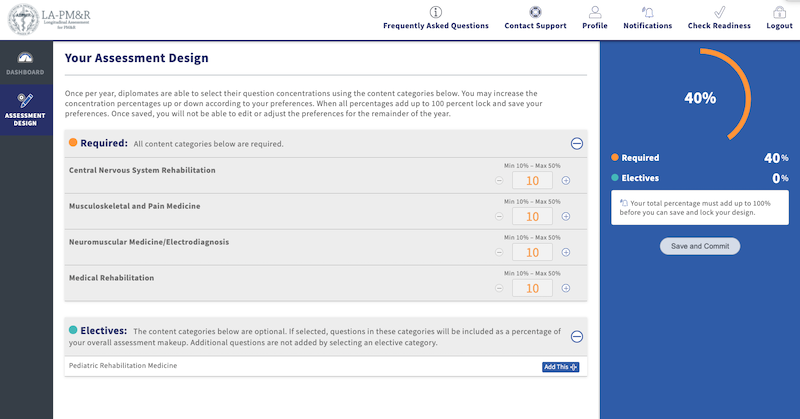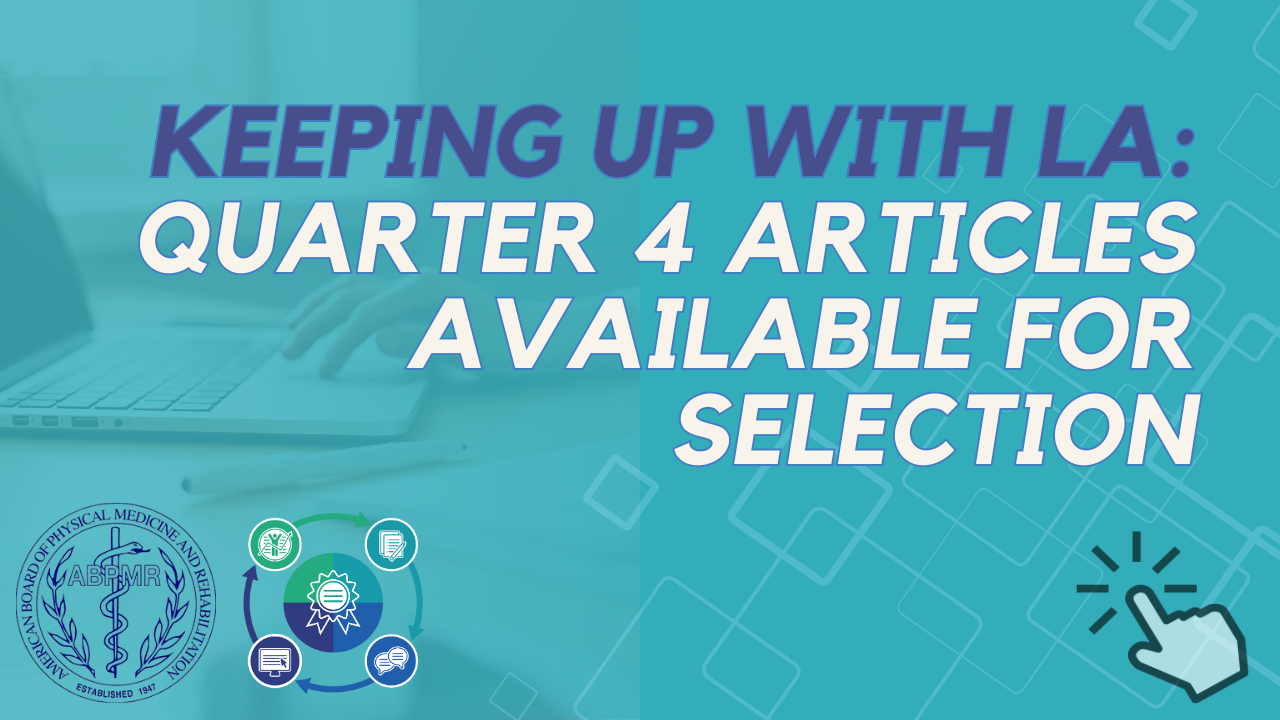LA-PMR
LA-PM&R Feature Spotlight: Customization System

In the midst of a pandemic, the ABPMR successfully upgraded and launched a new LA-PM&R platform with some significant improvements over the previous version.
With the application opening for LA-PM&R 2023 soon (remember— participants need to enroll every year), we plan to highlight a few of these features in more depth. Current participants can learn about how to get more out of the platform, and others can see how this dynamic new learning system can help boost their knowledge and memory retention.
Expanded in 2020: Customization System
When initially launched in early 2020 (and during the preceding pilot), the original LA-PM&R system's content categories could dial up to a maximum of 35%. With the launch of the new platform in August, those category maximums expanded to 50%. That's why users were prompted to design their assessment again after the new platform was launched. Going forward, these min/max percentages will be reset each year.
Here's a look at the new interface when you begin designing your assessment:

As you can see, the required category minimums are set to the ABPMR standard minimum of 10% each for CNS Rehabilitation, MSK and Pain Medicine, Neuromuscular Medicine and Electrodiagnosis, and Medical Rehabilitation.
In the new platform, because the Pediatric Rehabilitation Medicine category minimum is 0% (it also has the new maximum of 50%), this is deemed an elective—see the red box highlighting where you can click to add this category to your assessment design:

And here's an example assessment design after all categories' percentages add up to 100%:

This diplomate dialed Musculoskeletal and Pain Medicine up to 50% since that's what she sees most in practice; CNS Rehabilitation is next at 20% since some content in that category is also relevant to her practice. Even though she doesn't see children, this diplomate elected to use LA-PM&R as a learning tool to brush up on Pediatric Rehabilitation Medicine, since she sometimes consults on childhood-onset disorders; Neuromuscular Medicine and Medical Rehabilitation remained at their minimums of 10%.
Customization Strategies: How to use LA-PM&R to Improve
Based on prior feedback from diplomates on the broad scope of the MOC Examination, you wanted an assessment that was more relevant to your practice. On its face, the LA-PM&R system offers just that: A way to dial the percentages up and down according to your practice and the patients you see.
However, another approach you may want to consider, especially if you're like the majority of ABPMR diplomates and aren't yet in an 'assessment cycle,' (i.e., your LA-PM&R performance isn't yet being tracked and scored by the ABPMR), is to try dialing up the percentage in an area you'd like to brush up on, or in an area you don't normally see. This is where the research-backed learning tools of the platform can really shine: with spaced repetition built in, any questions you miss will show up again at regular intervals. As you answer questions and read the rationales afterward, the entire goal of the process is that you learn and improve over time.
For more, please visit our LA-PM&R webpages, and you can always contact us with questions.

